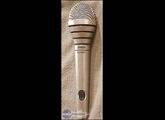Fiche technique
- Fabricant : AKG
- Modèle : D 330 BT
- Catégorie : Microphones dynamiques
- Poids du colis : 1.2 kg
- Autres dénominations : d 330 bt, d330bt, d330 bt, d 330bt, lot de micro, lotdemicro, micros
DESCRIPTION
INTRODUCTION : In a rather astonishing series of demonstrations
conducted throughout the U.S., AKG recently put inventory
samples of its new 0-300 Series microphones through an
incredible ordeal of abuse. Sample units were intentionally
dropped from heights of six feet or more, repeatedly struck
against hard surfaces and purposely subjected to some of the
most outrageous treatment ever inflicted on microphones. Oespite
incurring some cosmetic damage, each unit not only
"bounced back" in working order but - even more important
- each performed with the sound quality and finesse normally
associated only with a more delicate studio microphone.
While AKG does not advocate intentional abuse of any microphone,
it nonetheless held these demonstrations to dramatize
an extremely important point: That, with the development of
its 0-300 Series, it has succeeded in creating a radically new
and vastly superior generation of musicians' and broadcast
microphones - the very first instruments of their kind to successfully
blend the wide-range response of a studio microphone
and the virtually indestructible toughness of a field microphone
with one of the most comprehensively effective systems of
shock/noise rejection ever devised. Further enhancing these
combined factors are the 0-300s' distinctive styling, comfortable
balance and easy-to-service modular construction.
These remarkable design goals were achieved only by breaking
away from established industry concepts. After carefully evaluating
the real-world needs of touring vocalists, instrumentalists
and their sound engineers, AKG developed several unique (and
patented) acoustical, electrical and mechanical configurations
from the ground up to meet those needs.
As a result, the 0-300 Series is a family of microphones that
will surely set the performance standards of the pop-music and
broadcast industries for years to come. Elegant, yet bulldogtough,
these units are capable of satisfying the most subtle
artistic demands in the studio while shrugging off the daily
abuse, rough handling and various forms of noise that are all
too common in remotes, road shows, club dates and the like.
Furthermore, the 0-300s' simplified field-serviceability now
makes it unnecessary to carry an arsenal of bulky and expensive
backup microphones on tour.
PERFORMANCE : The 0-330BT is the premier model in the
0-300 Series, and embodies all of the uniquely sophisticated
design principles that went into the creation of the series. A
fully professional instrument whose frequency range, transient
response and tonal flexibility are on a par with those of the
very best studio dynamics, the 0-330BT surpasses the most
challenging demands of top vocal and instrumental artists.
With its variable bass·versus·distance contour (marked
emphasis or "proximity effect" when used close up; progreso
sively diminishing bass response when used farther away) and
smooth presence·rise contour (for added crispness and
"punch") plus nine different combinations of bass-rolloff/
presence-rise equalization, the 0-330BT is the ultimate creative
tool - one that offers its users unrivalled personal control
over the tonal "shading" of voices or instruments to suit
any conceivable locale, or any musical mood and style.
It is also noteworthy that the 0-330BT - unlike competitive
microphones - preserves critical signal-to-noise ratios in all of
its equalization modes. This is due to its specially designed filter
networks, which maintain constant midband sensitivity and
assure minimum midband impedance variations in all possible
combinations of bass and presence settings.
In addition, the 0-330BT's hypercardioid directional pattern is
far more discriminating than that of a standard cardioid and is
also unusually uniform with respect to frequency. These characteristics
- extremely important in broadcasting and utterly
indispensible for sound reinforcement - produce negligible
coloration of desired sounds at the sides of the microphone
while providing exceptional (and highly predictable) suppression
of unwanted acoustic feedback and backgrou nd noise
towards the rear of the microphone.
DESIGN/ CONSTRUCTION : What sets the 0-330BT apart,
however, is not merely its superb performance. Rather, it is
the combination of that performance with its unmatched
ruggedness, totally unprecedented noise-rejection capabilities,
fatigue-free handling, comfortable balance and extraordinary
ease of field service. The key to all of these factors is readily
apparent in the exploded view below and in the detailed
"walking-tour" description that follows overleaf.
SPECIAL DESIGN AND CONSTRUCTION TECHNIQUES
WINDS CREEN/ POP- FILTER ASSY
DIFFUSING
OUTER LAYER MIDDLE LAYER
SAFE TY BASKET ASSY
/
NOTCH WI
WIRE MESH
PLUG- iN TRANSDUCER MODULE
/ / MAIN NO i SE-CO MPENSAT PRESENCE
TRANSDUCER ING TRANSOUCER RISE SWITCH
BUCKING
WINDING
RING SUSPENSIONS
W/COMPLIANT DOMES
2-CONTACT
FEMALE
CONNECTOR
'M·t'I.:I.jlhi'~(d
/ BASS ROLL- "
OFF SW ITCH
DESCRIPTION (Continued)
The microphone's unique design and construction begin with
an unusually sturdy three-layer windscreen/pop-filter assembly .
This assembly consists of a shock-absorbing stainless-steel
wire-mesh outer layer, a blast-diffusing fabric middle layer and
reticulated polyurethane-foam inner layer (sandwiched together
into a removable liner) plus a threaded retaining ring that
secures the entire unit to the microphone housing. So effective
is this combination in reducing the effects of wind noise, breath
pop and similar acoustic interference, that an external wind
screen or pop filter is seldom, if ever, required.
As tough as the windscreen/pop filter is alone, it is further
reinforced against impact damage by a special safety-basket
assembly. Note that the safety basket is contoured to support
the inside of the windscreen/pop filter and to surround the
front of the transducer system - thus also isolating all internal
parts from head-on impact damage. As shown, the safety basket
consists of a resilient dome-shaped ribbed cage joined to a
reinforced open-frame casting. Fitted with a fine-wire -mesh
screen that coincides with side ports in the microphone housing,
the casting also has indexing notches that align the entire
rugged assembly with structural members in the microphone
housing.
Next in line is the totally unique transducer system. In terms
of its superb performance, its extraordinarily thorough shock
and noise suppression and its modular field-serviceable packaging,
the system is a prime example of the care and the attention
to deta il that AKG engineers lavished on the D-330BT.
To start with , the transducer system "floats" uniformly in all
directions within the microphone housing for unprecedented
isolation from the effects of impact damage, handling noise
and spurious vibrations . This is achieved by two special ringshaped
elastomer suspensions - one near the front of the system
and the other at the rear of the system . To combine the
advantages of both hard and soft suspension designs , each of
these ring suspensions has a dense, relatively hard body and a
series of compliant, progressively compressible dome -shaped
projections around its periphery - in effect forming a complex,
highly damped low-pass mechanical filter. Therefore, under
normal handling conditions, the compliant domes effectively
decouple the transducer system from mechanically and motionally
induced vibration. Further, under extremely abusive
conditions (dropping the microphone or subjecting it to lateral
impact), the domes increasingly compress, in proportion to
applied g-force, in a progressive braking action - ultimately
allowing the harder body of each suspension to act as a bumper .
These extraordinary suspensions, however, are only part of
AKG's comprehensive scheme of noise suppression. Note that
the transducer system uses two generating elements - the main
front-facing sound-pickup transducer !computer designed for
widest possible frequency range and superb transient response)
plus a special rear-facing nonacoustic (sealed) noise-compensating
transducer . Working together, these transducers further
reduce the effects of mechanically and motionally induced
handling noise by an additional 30 dB at 100 Hz. In this unique
arrangement , the two carefully matched tr ansducers are wired
in parallel and electrically in phase but - because of their opposed
orientation - operate out of phase. Thus, any handlingnoise
signal generated by the main transducer is nulled by an
equal but opposite handling-noise signal generated by the compensating
transducer (which acts strictly as an electromechanical
motion-sensing accelerometer). As still another precaution,
the main transducer incorporates a hum-bucking winding to
cancel the effects of electromagnetically induced noise from
ever-present power and lighting cables as well as from dimmers , power switchboards and the like.
The two transducers, together with the three-position presence
rise switch and its associated filter network, are encapsulated
, in a replaceable plug-in module. Injection-molded of stress
resistant thermoplastic, the module is fitted with a special low
noise two-contact female audio connector precisely aligned
and keyed to mate with a special two-pin male connector (and
the three -pos ition bass-rolloff switch with its filter network)
within the microphone housing,
The microphone housing itself is a lightweight, yet impac t
resistant zi nc-a lloy casting - elegantly styled, carefully balanced
and finished in glare-free matte nickel. For maximum wear
resistance, the finish is electroplated (not merely painted, as
on competitive microphones). In conjunction with the windscreen/pop filter and the safety basket, this housing effectively
encapsulates all internal parts against metal particles, dust and
moisture spray,
Should field service ever become necessary, the windscreen/
pop filter can be quickly unscrewed, the safety basket easily
lifted out, and the transducer module simply unplugged and
withdrawn from the microphone housing for replacement.
Spare assemblies and parts are readily available.
The D-330BT is a low-impedance balanced-output unit fitted
with a standard 3-pin male XLR-type connector. The microphone
is supplied complete with an SA-31 stand adapter and
a foam-lined vinyl protective case. Several optional accessories
- listed in the Technical Data section - are available .
TECHNICAL DATA
Transducer Type: Dynamic Hum Sensitivity (1 mG field; bass set norm): -143 dBm
Directional Characteristic: Hypercardioid Case Material : Nickel-plated die-cast zinc alloy
Frequency Range (bass, presence set norm): 50-20,000 Hz
Dimensions : See Dimensions figure
Nominal Impedance at 1 kHz (bass , pres set norm) : 370 ohms Schematic: See Schematic figure
Rated-Impedance Category: 250 ohms Net Weight : 340 g ( ~ 12 oz)
Recomme:1ded Load Impedance: ;;'1000 ohms I ncl uded Accessories:
Sensitivity at 1 kHz: SA-31 flex. snap-in stand adapter with 5/8-in . -27 thread
Open circuit: 1.2 mV/Pa;-58.4 dBV' Foam -lined vinyl case
Maximum power level: -58.5dBm (re: 1mW/10dynes/cm2)
Optional Accessories:
SA-26 clothespin stand adapter with 5/8-in. -27 thread
EIAG : -156 dBm
m
PF -10 foam pop filter (red, blue, yellow, off-white, gray)
20T,-20TS (optional): -48.5 dBV at 1 Pa* GN-7E, GN-20E modular flexibleijooseneck kits
Tolerance: +0, -1.5 dB KM-series floor and boom stands, stand accessories
Sound Pressure Level for 1 % THD: ST-series table stands
40 Hz, 1000 Hz, 5000 Hz: 128 dB MCH-series heavy-duty microphone cable assemblies
High-Z output w/MCH
"1 Pa (Pascal) = 10 Ilb = 10 dyneslem' '" 94 dB SPL
• •
+10
RESPON SE AT
o dB ',"\.,Im("w3 1/4')
ON A XIS
*
-10
-20
20 Hz 50 100 200 500 1000 2000 5000
+10
NORMAL FREQUENCY AND POLAR RESPONSE
l W Ih H)8 i ·0 0 . 4 tHl
TYPICAL PROXIMITY EFFECT r:-:z::" AT ,,-, Icm (",-,3/8") ON AXIS
* - fi-
90·1-+tf-++-H" HH-+-;r.--H90·
* ALL CURVES SHOWN WITH BASS AND
PRESENCE SWITCHES SET TO THEIR
~ (N ORMAL) POSITIONS
MINIMUM REJECTION AT 120°-150° OFF AXIS*
+3dB DEVIATION ALLOWABLE WITHIN ANY ONE O C TAVE . ~
10,000 20,000 -._.
EQUALIZATION CHARACTERISTICS
RESPONSE AT "'-'lm(",-,3 1/ 4') ON AXIS ~ 63 dB, = i= A 65 dB,
AT EACH SETTING OF BASS-ROLLOFF _ ~5 kHz _ . -+I-::; -+~..!- _ 5 kHz
AND / OR PRESENCE RISE SWITCH:
150·
90·H-++-f-H / ~-'--'-LJ90·
2000 Hz
4000 Hz
8000 Hz
_ . _, 16.000 Hz
ANOR_MAL _
NOTE: AT BA SS/PRESENCE SETTING S OTHER--'
THAN NORM., PROXIMITY 8 REJECTION CURVES
(IN FIGURE ABOVE) ALSO SHIFT IN ACCORD.
WITH SELECTED EQUALIZATION.
,.W - 0 ) .)0 8 r le ."l 5 S/PR(S) -102 - 4 80
500 1000 2000 5000 10,000 20,000
ARCHITECTS' AND ENGINEERS' SPECIFICATIONS
OUTLINE : The microphone shall be a dynamic pressure-jJradient type .
As specified in subsequent detail, it shall have an intrinsically wide
frequency range accompanied by a variable bass-versusa fixed presence-rise contour, and a highly uniform hypercardioid polar
pattern with respect to frequency. As also specified in subsequent detail,
it shall incorporate facilities for adjusting both its low-frequency
and/or mid-high -frequency response charac:teristics in nine different
combinations to suit user preferences and/or ambient acoustics, and
shall maintain constant midband sensitivity and minimum midband
impedance variations in all nine of these response combinations . As
further specified in subsequent detail, it shall employ special modular
design and construction techniques for exceptional resistance to impact
damage and to noise Iwhether acoustically, mechanically , motionally,
or electromagnetically induced I, for protection from foreign
particles, for fatigue-free handling balance and comfort under prolonged
use, and for extraordinary ease of field service .
PERFORMANCE : The microphone shall have a normal, uneQualized
frequency range li.e., frequency range unaltered by user adjustments
of its low-frequency and/or mid-high-freQuency response) of 50-20,000
Hz, accompanied by the following on-axis characteristics : (1) a 16<1B
variable bass-versus-distance contour at 100 Hz that shall range from - 3
dB response rolloff at a working distance of 1 m 1""3-1/4 ft) to +13 dB
typical proximity-eftect boost at a working distance of 1 cm 1"' 3/8 in.);
(2) a fixed presence-rise contour from 1500 Hz to 12,000 Hz that shall
boost response +5 dB at 5000 Hz.
Under the normal, uneQualized conditions previously specified, the
microphone shall have a highly uniform hypercardioid directional pattern
with respect to frequency as follows : 11) at a sound-incidence angle
of 90 degrees, typical off-axis frequency response shall not vary more
than 5-6dB from 125-16,000 Hz; (2) at a sound~ncidence angle of 120
150 degrees, minimum front-to ...ear discrimination shall exceed 10 dB
at 100 Hz, 18 dB at 1000 Hz, and 15 dB at 5000 Hz . An effective hypercardioid
pattern shall be maintained over the entire frequency range.
Under the normal, uneQualized conditions previously specified, and at
1000 Hz, the microphone shall have an open-circuit sensitivity of 1_2
mV /Pa 1-58.4 dBV) and a nominal I true) impedance of 370 ohms. However,
in accordance with various industry standards for calculating other
sensitivity figures from this open-circuit value, the microphone's rated
impedance shall be categorized as follows: 111 for a maximumi>0werlevel
output of -58,5 dBm Ire: 1 mW/l0 dynes/ cm') , the rated impedance
shall be categorized as 250 ohms; 12) for an EIA sensitivity rating
IG m ) of -156 dBm, the rated impedance shall be categorized as 600
ohms. The microphone shall be capable of handling a maximum soundpressure
level of 50 Pa 1128 dB SPLi at 1000 Hz with distortion not
exceeding 1%.
Low-frequency response characteristics shall be adjustable by means of
a three-position bass-rolloff switch accessible through a CUtout in the
microphone housing. The switch shall shift specified 100-Hz values of
on-axis bass rolloft/proximity -effect boost, all-axis response, and frontto-rear discrimination in a fixed relationship as follows : (1) the switch
position marked with the normal-response symbol shall maintain all
normal values as specified; 12) the switch position marked with the
medium-rolloff symbol shall adjust all normal values 15 dB downward;
\
,
~ -
125 Hz 2000 Hz
250 Hz 4000 Hz
500 Hz 8000 Hz
1000 Hz 16,000 Hz
(31 the switch position marked with the sharp -rolloff symbol shall
adjust all normal values 25 dB downward.
Mid -high-freQuency response characteristics shall be adjustable by a
three -position presence-rise switch also accessible through the cutout in
the microphone housing. The switch shall shift specified 5000-Hz values
of on -ax is presence rise, off -axis response, and front -to -rear discrimination
in a fixed relationship as follows: 111 the switch position marked
with the normal -response symbol shall maintain all normal values as
specified ; (2) the switch position marked with the medium-rise symbol
shall adjust all normal values 2-3 dB upward ; 13) the switch position
marked with the sharp-rise symbol shall adjust all normal values 5 dB
upward.
To provide nine different equalization contours, the microphone's
bass-rolloff and presence-rise switches shall be separately and/or simultaneously
adjustable in nine possible combinations of settings. To
preserve optimum midband signal-to-noise ratios at alJ times, the associated
equalization networks shall exhibit the following characteristics
at 1000 Hz in all nine combinations of switch settings : (11 constant
sensitivity; 12) minimum variations in the 370-ohm value of nominal
impedance previously specified. With the bass ...olloll switch preset to
one of its three positions at a time, and with the presence-rise switch
stepped from normal through medium to sharp in each case, 370-ohm
impedance shall vary as follows: (11 with bass rolloft preset to normal,
impedance shall increase by approximately 0, +3%, and +11 % respectively;
12) with bass rolloll preset to medium, impedance shall decrease
by approximately -6%, -6%, and 0 respectively ; 131 with bass rolloll
preset to sharp, impedance shall decrease by approximately -33%,
-33% . and -36% respectively .
DESIGN/CONSTRUCTION : To achieve all of the characteristics out
lined or specified up to this point, the microphone shall consist of four
special modular assemblies interrelated as follows: 111 a removable
shock -absorbing three~ayer windscreen/pop filter; 12) a removable
safety basket, internally reinforcing the windscreen/pop filter and protecting
the front of the transducer system; (3) a specially suspended
and vibration/hum-compensated plug~n module, containing the transducer
system plus the presence..-ise switch with its associated network ;
(4) an impact-resistant main housing, mating with the first three assem
blies and containing the basHolioff switch with its associated network
plus the microphone's audio output connector . Specific details of all
assemblies shall be as follows :
The three-layer windscreen/pop-filter assembly shall effectively suppress
wind noise, breath pop, and similar acoustic interference, and
shall also partially isolate the transducer module from the effects of
head-on impact damage. The assembly shall consist of a shock-absorbing
slainless.,;teel wire-mesh outer layer, a removable liner made up of a
blast-diffusing fabric middle layer sandwiched with an open-cell reticulated
polyurethane-foam inner layer, and an internally threaded retaining
ring to mate the entire assembly securely with an external thread on
the main housing.
The internal safety-basket assembly shall be specially contoured to fit
supportively just inside the windscreen/pop filter and protectively
around the front of the transducer module, thus reinforcing the windcontinued
overleaf
'
.
ARCHITECTS' AND ENGINEERS' SPECIRCATIONS (Continued)
screen/pop filter against, and additionally isolating the transducer
module from, the effects of head-on impact damage . The safety basket
shall consist of a resilient dome-shaped ribbed cage, joined to a rein
forced truncated-conical open-frame casting fitted with fine-wire -mesh
screen to coincide with side ports in the main housing and having indexing
notches to align the entire assembly with structural members in the
main housing.
To further isolate the transducer module from the effects of impact
damage, as well as to reduce the effects of handling noise and spurious
vibrations, the entire module shall float uniformly in all directions within
the main housing. This degree of isolation shall be achieved by means
of two special ring-shaped elastomer suspensions , one fitted around the
module near its front end , and the other fitted to the module at its rear
end, To combine the advantages of both h ard and soft suspension designs
in the form of a comple x, highly damped low..,ass mechanical
filter , each of these ring suspensions shall have a dense , relatively hard
body and a series of compliant, progressively compressible dome-shaped
projections around its periphery that shall function as follows : (1) under
normal handling conditions , the compliant domes shall effectively decouple
the transducer module from mechanically and motionally in
duced handling noise ; (2) under ex tremely abusive conditions (e,g "
dropping the microphone or subjecting it to lateral impactl , the domes
shall increasingly compress, in proportion to applied g-force, in a progressive
braking action that shall ultimately allow the harder body of
each suspension to act as a bumper.
To further reduce the effects of mechanically and motionally induced
handling noise by an additional 30 dB at 100 Hz, the transducer module
shall employ twO coaxially mounted moving-coil transducers working
together in a special no ise-bucking arrangement. One transducer shall
serve as the main Isound ·pickup) device, and the other transducer shall
serve as a special electromechanical Inonacoustic} noise-compens3ting
device acting strictly as a motion-sensing accelerometer. The main
transducer shall be positioned closest to the front of the module , shall
face forward, shall be computer-designed for widest possible frequency
range and optimum transient response, shall employ a nonmetallic
MAKROFOL TM diaphragm , and shall further incorporate a humbucking
winding to cancel the effects of stray magnetic fie l d ~ from
power and lighting cables, dimmers, and power switchboards. The noisecompensating
transducer shall be positioned behind the main transducer ,
shall face rearward, and shall employ a nonmetallic MAKROFOL ™
dummy diaphragm having exactly the same mass and compliance as the
main transducer's diaphragm. The two transducers shall be connected in
parallel and electrically in phase (i.e., inward direction of diaphragm
movement in each shall generate like polarity of output signal from
each I. However , because of their opposed orientation, the two tran s·
ducers shall operate effectively out of phase so that any handling-floise
signal generated by the main transducer shall be nulled by an equal but
opposite handling-noise signal generated by the noi se-compensating
DIMENSIONS
---- -VIBBmm ----~
('V7-3/8")
'V 53mm
('V2-1/16")
-v20mm
(-v13 / IS")
J,W :J! ! u e r- faQ~JIQ ' 9
transduce r. To provide the adjustable presence-rise characteristics
previously specified, the transducer module shall also incorporate a
low-noise SP3T switch with a tapped inductor . These shall interrelate
with t he transducer system as follows : (II the normal position of the
switch shall disconnect the inductor completely; 12) the medium-r ise
(+2-3 dB) position of the switch shall connect a tapped portion of the
inductor in series with the noise...compensating transducer; (3) the sharp
rise (+5 dB) position of the switch shall connect the entire inductor in
series with the noise-compensating transducer . The body of the transducer
module shall be injection-molded of stress -resistant thermoplastic,
and shall be fitted at its rear end with a two-contact female audio conneclOr
precisely aligned and keyed to mate the entire module securely
and noiselessly with a two-pin male audio connector within the main
housing .
The main housing shall incorporate the following three major elements :
(11 an internal two-pin male audio connector precisely aligned to mate
securely and noiselessly with the two...contact female audio connector at
the rear end of the transducer module; (2) an external three..,in male
audio connector designed to mate with Cannon XLR , Neutrik 3FC ,
Switchcraft A3F, or equi valent connectors; (3 1 a low-no ise SP3T switch
with a tapped inductor to provide the adjustable bass -rolloff characteristics
previously specified . The switch and inductor shall interrelate
with the system within the transducer module as follows : 111 the normal
position of the switch shall disconnect the inductor completely; 121 the
medium-rolloff (-15 dBI position of the switch shall connect the entire
inductor in parallel with the main and noise...compensating transducers ;
(3) the sharp-rolloff (-25 dB) position of the switch shall connect a
tapped portion of the inductor in parallel with the main and noise-compensating
transducers . The main housing shall also incorporate structural
members 10 mate with the indexing notches on the safety ba sket , and
an external thread to mate with the internal thread on the windscreen l
pop filter . In conjunction with those two assemblies, the main housing
shall protect the transducer module from metal particles , dust , and
mo isture spray . The main housing shall be a lightweight impact.,esistant
zinc -alloy ca sting , and shall have an electroplated matte-flickel finish for
maximum wear resistance and for freedom from specular light reflections .
The assembled microphone shall be 1 B8 mm I'" 7-3/ 8 in ,I long by 53 mm
("' 2-1 / 16 in .) in maximum diameter by 20 mm ("' 13/16 in .) ,n minimum
diameter, and the net weight shall not exceed 340 g ( "' 12 ozl.
The microphone ' s weight distribution and shape shall be such that they
promote fatigue-free handling balance and comfort under prolonged use .
To facilitate field service , all four constituent assemblies of the microphone
shall be quickly and easily separable for replacement or repair.
An AKG model SA ·31 swivel stand adapter w i th standard 5/8-,n . -27
thread, and a foam-lined vinyl carrying case shall be provided with the
microphone . The microphone herein specified shall be the AKG
D ·330BT .
SCHEMATIC
rw .-------~--------~--_(~_.----------~
1-'
::>
Ig
I::!;
12
I';'
13
lO
t,
I
I
•
•
FRONT
FACING
RED
(IN PHASEI
e BASS~
ROLLOFF
SWITCH
L _'-------i>------1C (-__--....J
Positive pressure on diaphragm of main transducer
produces positive voltage on "in phase" lead,
~
,
Q
c
~ ,
!
2
AKC ACOUSTICS, INC.
77 Selleck Street, Stamford, CT 06902 • (203) 348-2121
(lAKG Aeou>tl"., Inc . 1980 Pr int d in USA
IKlAKG A kuliitche und K l no -Gerate GmbH . AUllrla
PI'Od UC1 d.,lon .nd price,
.r. IUblect 10 cna n oe without notlc• .
•
•
Distribué par Freevox
Avis utilisateurs
Un très bon micro chant
Publié le 16/11/23 à 14:31Un achat bien amorti.
Très bon .
Publié le 17/03/16 à 04:48Atténuateur 100 Hz intégré (jusq'à -25 db), boost 4 kHz intégré (jusqu'à 4 db)
Sensibilité : 1,2 mV/Pa
Plage : 50 Hz - 20 kHz
Niv de press acoust pour 1% de THD : 128 dB
AVIS GLOBAL
Utilisé régulièrement en concert ou répète depuis + de 15 ans, en tant que musicien amateur ou en tant que sonorisateur amateur. Donc plusieurs 100aines de presta.
Un peu faible en terme de sensibilité au regard d'autres micros de catégorie un peu " supérieure " (genre Béta 58 ou N/D767A) ou même de micros plus récents de catégorie " inférieure " (E845, D880, etc.), mais sa technologie date qd même de 20 ans.
Nota : il ne favorise pas pour autant le larsen, ce qui peut sembler...…
Atténuateur 100 Hz intégré (jusq'à -25 db), boost 4 kHz intégré (jusqu'à 4 db)
Sensibilité : 1,2 mV/Pa
Plage : 50 Hz - 20 kHz
Niv de press acoust pour 1% de THD : 128 dB
AVIS GLOBAL
Utilisé régulièrement en concert ou répète depuis + de 15 ans, en tant que musicien amateur ou en tant que sonorisateur amateur. Donc plusieurs 100aines de presta.
Un peu faible en terme de sensibilité au regard d'autres micros de catégorie un peu " supérieure " (genre Béta 58 ou N/D767A) ou même de micros plus récents de catégorie " inférieure " (E845, D880, etc.), mais sa technologie date qd même de 20 ans.
Nota : il ne favorise pas pour autant le larsen, ce qui peut sembler assez étonnant.
Vraiment très costaud (c'en est même impressionnant, le seul type de micro dont je n'ai jamais eu à changer de bonnette), avec une finition impeccable.
Son plutôt clair et précis, restitution " plate ".
J'en posssède 4 qui me servent essentiellement pour la reprise de CC et de toms en concert, en cas de batteur pressenti comme bourrin ou maladroit (faut parfois savoir économiser ses micros plus fragiles et plus chers, surtout en tant qu'amateur et bénévole)
Dans ce mode d'utilisation, il est un peu moins riche et fin qu'un M201N C, mais nettement plus efficace qu'un cardioïde dy type SM57 (meilleure immunité aux sons environnants, restitution plus large et plus fidèle)
Utilisable aussi, en dépannage sur charley ou ride.
Techniqt intéressant pour le chant (très resistant aux plosives, peu d'effet de proximité notable dans mes souvenirs, même sans coupe-bas), il fut un temps où je l'ai plutôt utilisé pour le choeur individuel que pour du lead, ce en raison de sa sensibilité un peu faible et de son léger déficit dans le médium.
Bon souvenir en reprise d'ampli guitare.
Pas de mauvais souvenir (mais c'est lointain) sur des cordes acoustiques. Jamais testé sur du vent (cuivre ou bois)
Dans tous les cas, préférable à mon avis à un SM58 card ou même à son neveu scard de chez AKG, le D880 (trop sombre et pas assez précis à mon goût)
Trouvable d'occase, à des prix allant du assez ridicule jusqu'au très accessible (entre 40 et 80 € env) par rapport à la qualité du machin.
En résumé, un micro scène ancien mais très polyvalent et assez pratique, plutôt fidèle en restitution sonore, très efficace dans les aigus (pour un dynamique), mais un peu faible en signal.
Très bon rapport qualité/prix.
AVIS GLOBAL
Je l'ai trouvé il ya deux jour chez cash converter ( 12 euros, ils vendent cher des merdes, et des fois, par ignorance, pas cher des super trucs ). Comparé à mon SM 58, il lui est supérieur (largement), je le préfère au beta 58 également. C'est une très bonne surprise d'autant plus que je ne le connaissais pas.
Le rapport qualité prix est fabuleux (le mien est dans un état impeccable, le câblage est nickel.…
AVIS GLOBAL
Je l'ai trouvé il ya deux jour chez cash converter ( 12 euros, ils vendent cher des merdes, et des fois, par ignorance, pas cher des super trucs ). Comparé à mon SM 58, il lui est supérieur (largement), je le préfère au beta 58 également. C'est une très bonne surprise d'autant plus que je ne le connaissais pas.
Le rapport qualité prix est fabuleux (le mien est dans un état impeccable, le câblage est nickel.
Manuels et autres fichiers
Microphones dynamiques concurrents
-
9/10
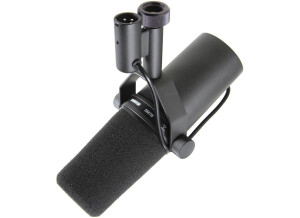
SM7B
Microphone dynamique
367 € neuf (50 offres)200 € d'occasion (50 offres) -
9/10
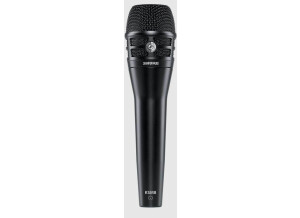
KSM8 Dualdyne
Microphone dynamique
398 € neuf (34 offres)280 € d'occasion (34 offres) -
9/10
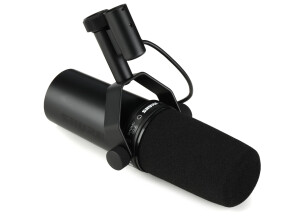
SM7dB
Microphone dynamique
519 € neuf (16 offres)380 € d'occasion (16 offres) -
7/10

BP40
Microphone dynamique
338 € neuf (13 offres) -
7/10
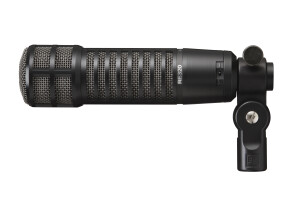
RE320
Microphone dynamique
315 € neuf (10 offres)220 € d'occasion (10 offres) -
10/10

RE20
Microphone dynamique
609 € neuf (19 offres)500 € d'occasion (19 offres) -
8/10
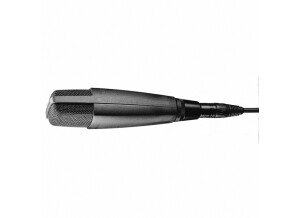
MD 421-II
Microphone dynamique
375 € neuf (19 offres)220 € d'occasion (19 offres)
Autres microphones dynamiques AKG
-

D 88 S
Microphone dynamique
-
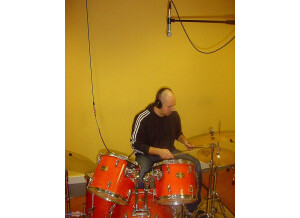
D 19
Microphone dynamique
420 € d'occasion (2 offres) -
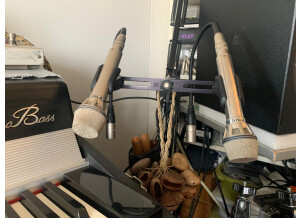
D190C
Microphone dynamique
110 € d'occasion (2 offres) -

D200 E1
Microphone dynamique
-
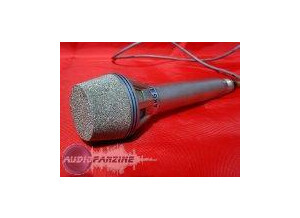
D 190
Microphone dynamique
110 € d'occasion (1 offre) -

D 660 S
Microphone dynamique
-

D880M
Microphone dynamique
-

D 310
Microphone dynamique
-

D30
Microphone dynamique
-

D 125
Microphone dynamique










